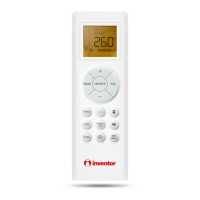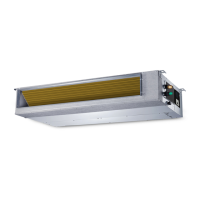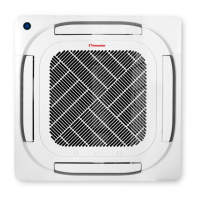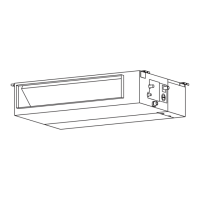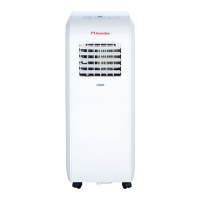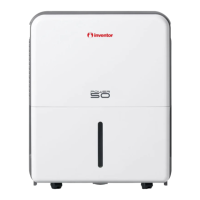Page 19
Page 18
Fig. 7.7
CAUTION
• Ensure to wrap insulation around the piping.
Direct contact with the bare piping may result
in burns or frostbite.
• Make sure the pipe is properly connected.
Over tightening may damage the bell mouth
and under tightening may lead to leakage.
NOTE ON MINIMUM BEND RADIUS
Carefully bend the tubing in the middle
according to the diagram below. DO NOT bend
the tubing more than 90° or more than 3 times.
Bend the pipe with thumb
min-radius 10cm (3.9”)
Fig. 7.8
6. After connecting the copper pipes to the
indoor unit, wrap the power cable, signal
cable and the piping together with
binding tape.
NOTE: DO NOT intertwine signal cable with
other wires. While bundling these items
together, do not intertwine or cross the signal
cable with any other wiring.
7. Thread this pipeline through the wall and
connect it to the outdoor unit.
8. Insulate all the piping, including the valves
of the outdoor unit.
9. Open the stop valves of the outdoor unit
to start the ow of the refrigerant between
the indoor and outdoor unit.
CAUTION
Check to make sure there is no refrigerant leak
after completing the installation work. If there is
a refrigerant leak, ventilate the area immediately
and evacuate the system (refer to the Air
Evacuation section of this manual).
TAKE NOTE OF FUSE SPECIFICATIONS
The air conditioner’s circuit board(PCB) is
designed with a fuse to provide overcurrent
protection. The specications of the fuse are
printed on the circuit board, such as:
T3.15A/250VAC, T5A/250VAC, etc.
Wiring
Safety Precautions
WARNING
• Be sure to disconnect the power supply
before working on the unit.
• All electrical wiring must be done
according to local and national regulations.
• Electrical wiring must be done by a
qualied technician. Improper connections
may cause electrical malfunction, injury
and re.
• An independent circuit and single outlet
must be used for this unit. DO NOT plug
another appliance or charger into the
same outlet.If the electrical circuit capacity
is not enough or there is a defect in the
electrical work, it can lead to shock, re,
unit and property damage.
• Connect the power cable to the terminals
and fasten it with a clamp. An insecure
connection may cause re.
• Make sure that all wiring is done correctly
and the control board cover is properly
installed. Failure to do so can cause
overheating at the connection points, re,
and electrical shock.
• Ensure that main supply connection is
made through a switch that disconnects
all poles, with contact gap of a least 3mm
(0.118”).
• DO NOT modify the length of the power
cord or use an extension cord.
CAUTION
• Connect the outdoor wires before
connecting the indoor wires.
• Make sure you ground the unit. The
grounding wire should be away from gas
pipes, water pipes, lightning rods,
telephone or other grounding wires.
Improper grounding may cause electrical
shock.
• DO NOT connect the unit with the power
source until all wiring and piping is
completed.
• Make sure that you do not cross your
electrical wiring with your signal wiring, as
this can cause distortion and interference.
Follow these instructions to prevent distortion
when the compressor starts:
• The unit must be connected to the main
outlet. Normally, the power supply must
have a low output impedance of 32 ohms.
• No other equipment should be connected
to the same power circuit.
• The unit’s power information can be found
on the rating sticker on the product.
Outdoor Unit Wiring
WARNING
Before performing any electrical or wiring work,
turn off the main power to the system.
1. Prepare the cable for connection
a.
You must rst choose the right cable size
before preparing it for connection. Be sure
to use H07RN-F cables.
Table 8.1: Minimum Cross-Sectional Area
of Power and Signal Cables in North
America
Rated Current of
Appliance (A)
AWG
≤ 7 18
7 - 13 16
13 - 18 14
18 - 25 12
25 - 30 10
8
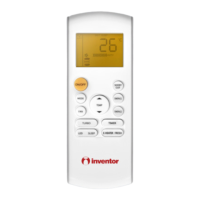
